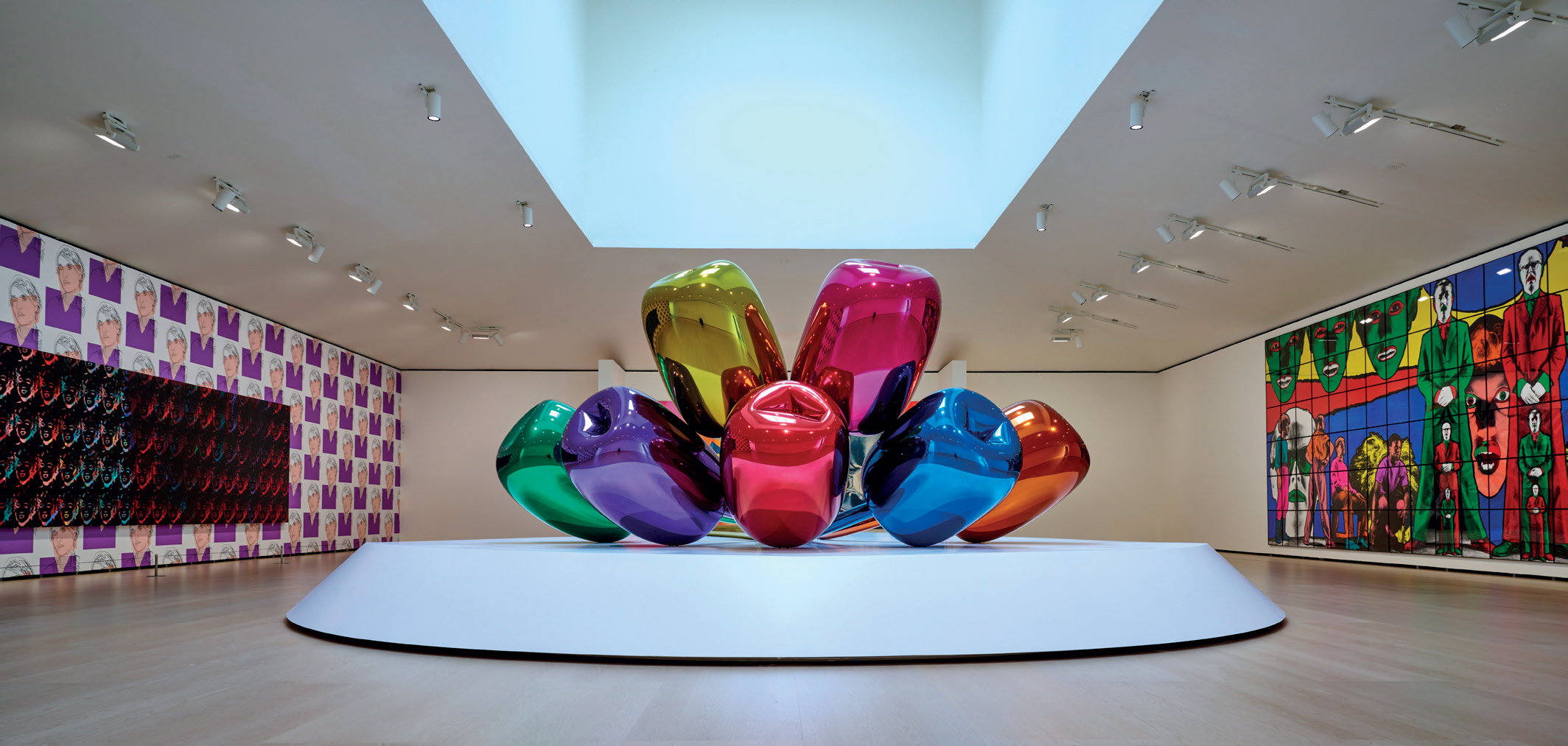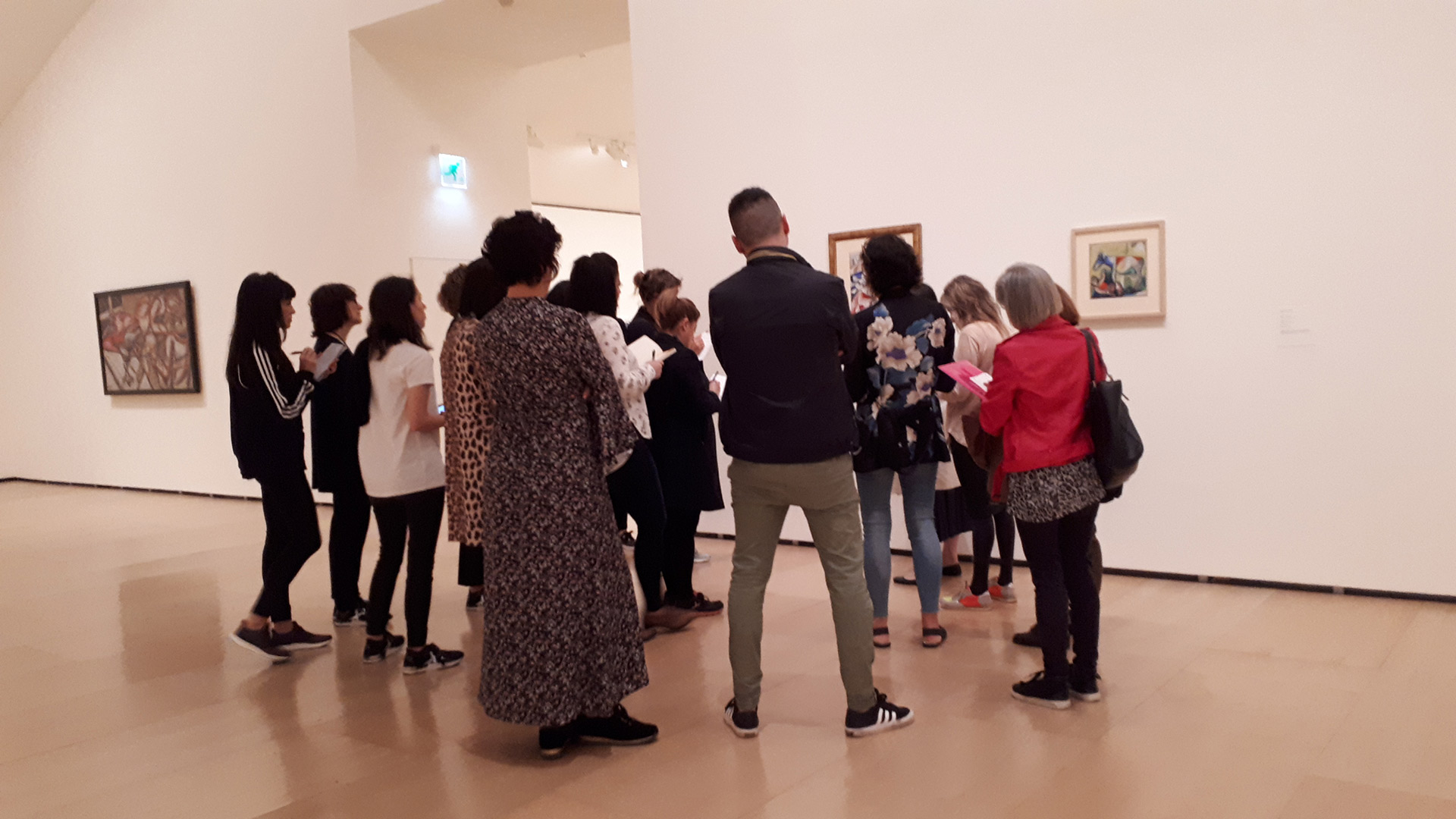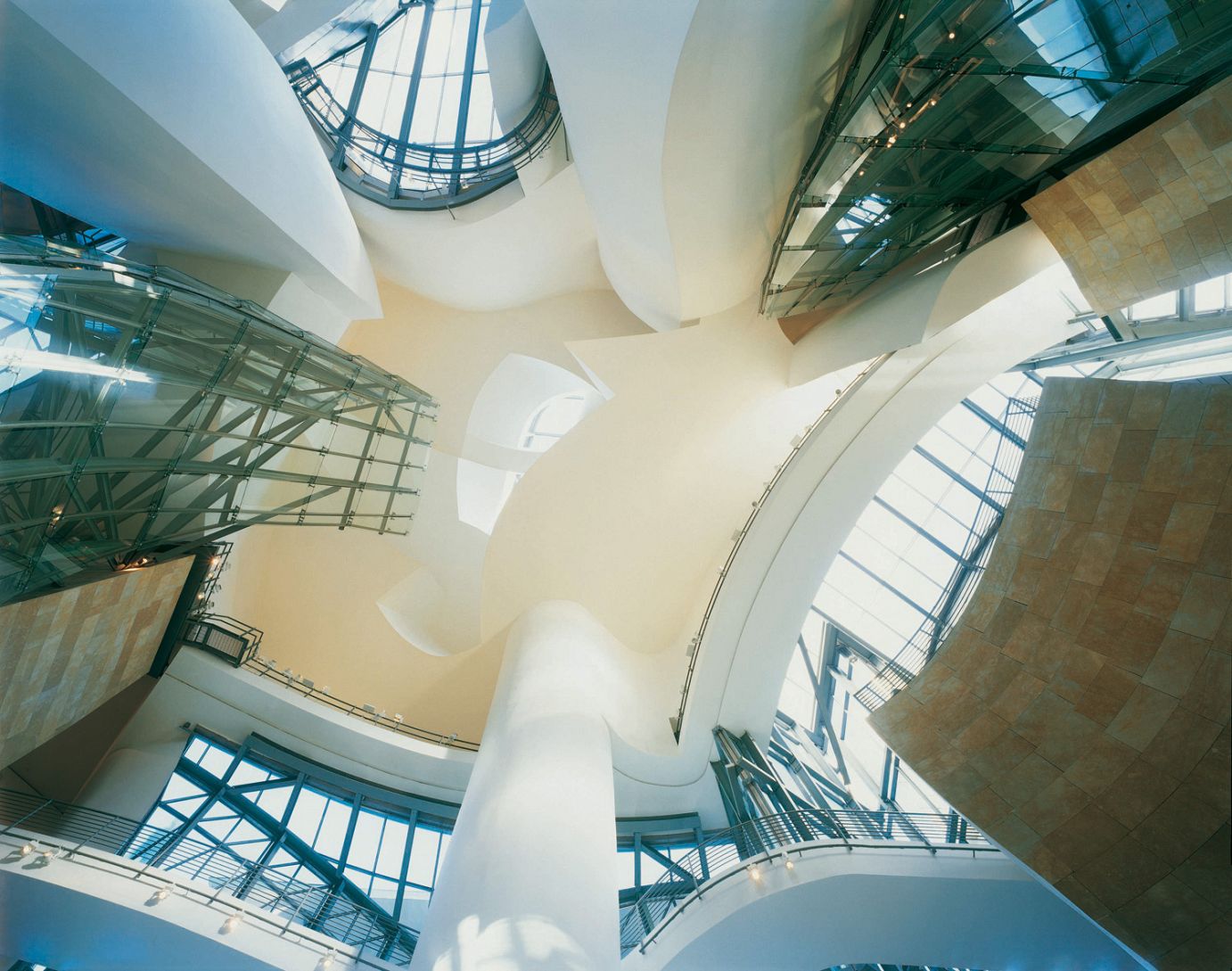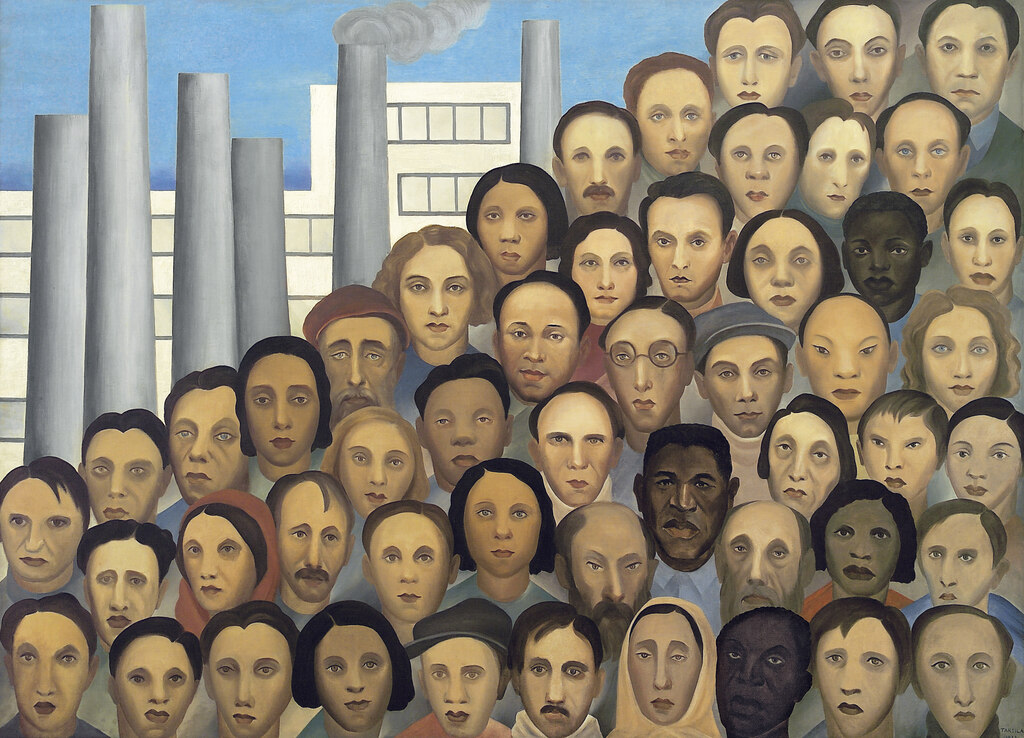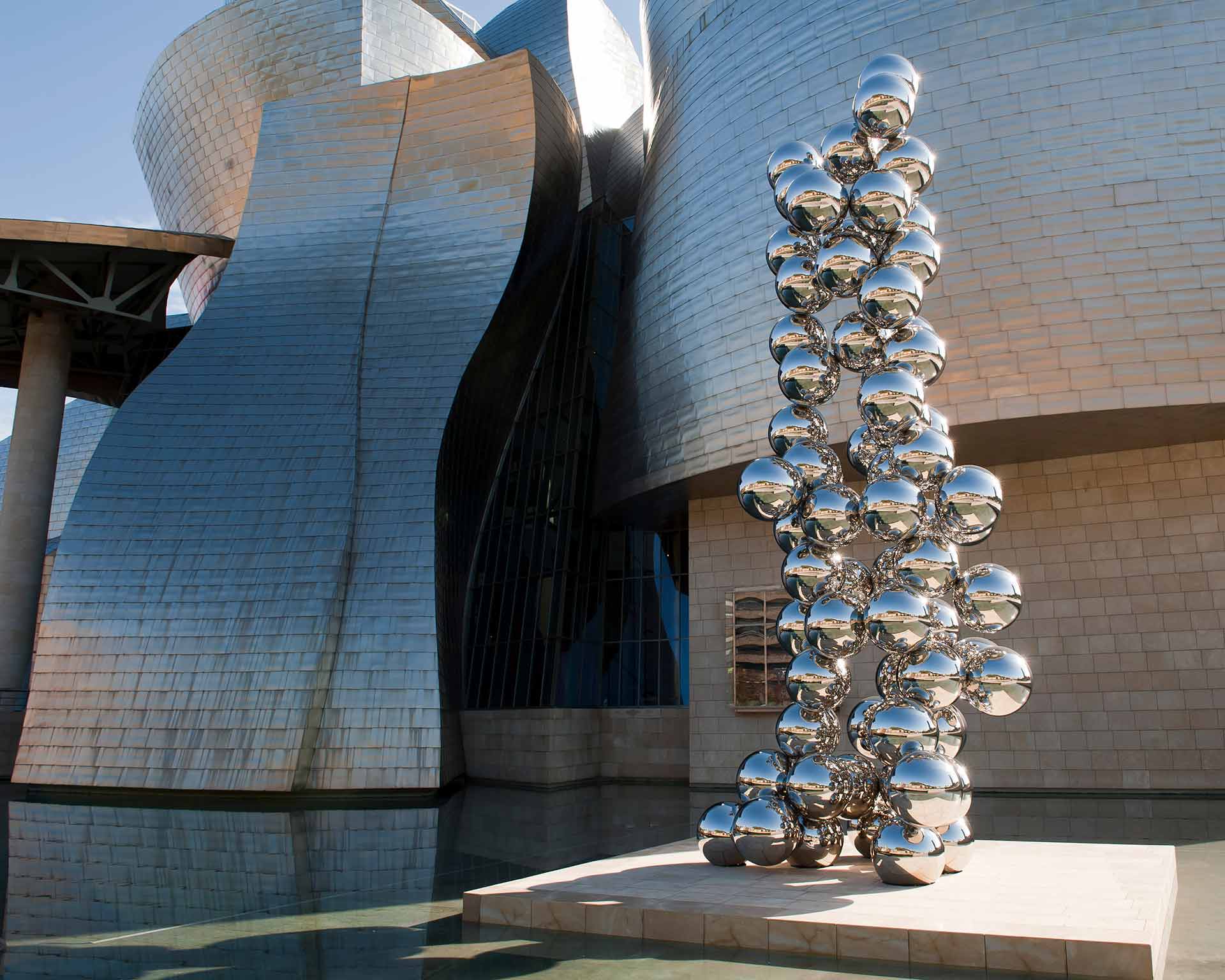
Art & fun
Welcome to the Guggenheim Museum Bilbao!
Can art help us understand what we feel?
This self-guided tour will take you to some artworks in the Museum Collection that most visitors find inspiring, amusing, and enjoyable. Maybe you will feel the same about them… The selection is based on the results of ARTETIK: From the Art, a digital experiment in art and emotions. You can be part of the experiment too!
We hope you find the tour rewarding!

Tall Tree and the Eye
Pond
Get into the Museum. Once in the Atrium, get out on to the terrace and look in the direction of Deusto Bridge. You will see an eye-catching sculpture by Anish Kapoor, consisting of seventy-three reflective spheres anchored around three axes.
For these site-specific works, Kapoor looks for inspiration in architecture. They evoke unique emotions in the viewer, both collective and intimate. The artist believes sculpture to be “in constant transformation”, undergoing processes of self-generation, dissolution, fragmentation, and multiplication.
Kapoor considers the viewer’s body and look to be essential elements in dynamic, illusion-making works of art like this one. The viewer brings their own subjective reality into play when facing them, thus finding new ways of looking and experiencing the world.
What can you see in the reflective spheres? How do you feel when looking at them?
Anish Kapoor
Tall Tree and the Eye, 2009
Stainless steel and carbon steel
1297 x 442 x 440 cm
Guggenheim Bilbao Museoa
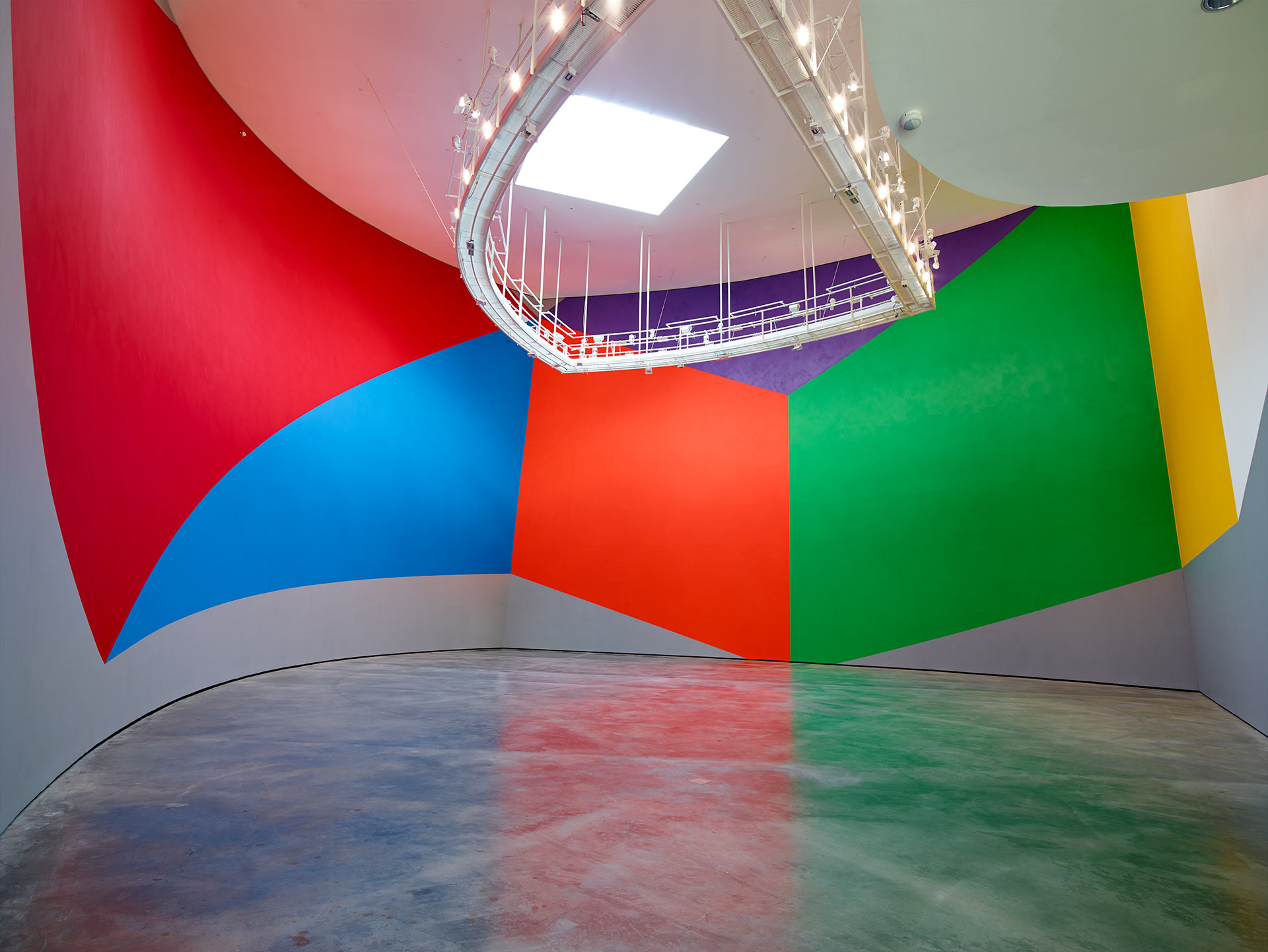
Wall Drawing #831 (Geometric Forms)
Gallery 302, level 3
In his creative process, Sol LeWitt challenges the traditional methods and techniques used to make a work of art. This Wall Drawing was not made by DeWitt himself, but by a team following his instructions. His point is that art is in the idea, rather than in its becoming a reality.
LeWitt’s Wall Drawings are drawn directly on the wall and erased after the exhibitions. The artist’s instructions are kept for the next time they are needed.
This site-specific Wall Drawing was originally designed for another large gallery (208, on level 2) back in 1997, for the opening of the Museum.
One of the artist’s earliest Wall Drawings made with acrylic on wall, it boasts bright, saturated colors: red, blue, orange, green, purple, grey… Irregular geometric forms follow the curve and inclination of Frank Gehry’s wall, and painting and architecture merge and transform each other.
Take a slow walk around the gallery. How do you feel when looking at these forms and colors? Would you feel different if the painting’s scale or its colors were different?
Sol LeWitt
Wall Drawing # 831 (Geometric Forms), 1997
Acrylic on wall
Site-specific dimensions
Guggenheim Bilbao Museoa

Waking
Gallery 303, level 3
Gilbert and George met in the 1960s. They soon moved together and began to work together, merging their identities to become Gilbert & George. They make no distinction between art and life: their lives are their own works of art. In the late 1960s, they conceived their “Living Sculptures”, which transformed their everyday activities into performance art.
Gilbert & George have tried a variety of disciplines, including painting, drawing, photography, writing, film, and performance. In all of them, the artists take center stage, often in the form of self-portraits.
In the mid-1970s, the artists adopted the grid format for their photographic works, while in the early 1980s, they began to dye collaged photographs with lurid colors, thereby playfully summoning the tradition of stained-glass windows in churches. Both features can be appreciated in Waking.
Their works from this period draw upon the particulars of East End society and the British urban homosexual experience, but do so in order to engage the full range of human existence.
Gilbert & George
Waking, 1984
Photo-piece
363 x 1111 cm
Guggenheim Bilbao Museoa
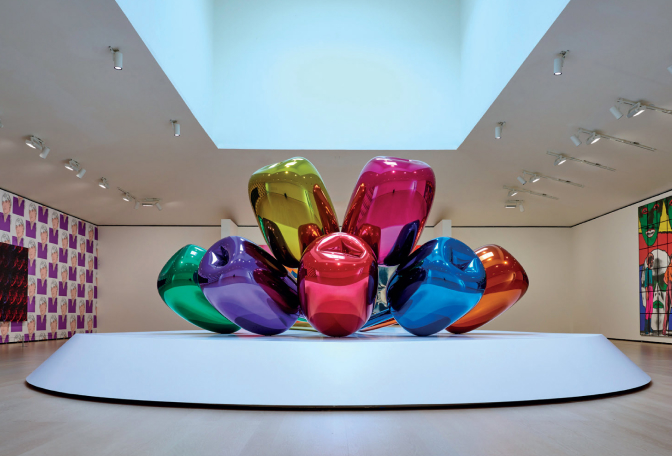
Tulips
Gallery 303, level 3
In the same gallery, you can take a look at Tulips, a work by American artist Jeff Koons.
Back in the 1980s, Koons defied the limits between highbrow and popular culture by using a visual language that drew on marketing, advertising, and the entertainment industry to reach across to the so-called masses.
Tulips is a bouquet of multicolor balloon flowers blown up to gargantuan proportions (more than 2 meters tall and 5 meters across). It belongs to Koons’s Celebration series, which he initiated in 1994. Focusing on the kinds of generic, mass-produced objects associated with birthday parties, holidays, and other festive events, the paintings and sculptures in the series reflect Koons’s continued engagement with the emblems of childhood.
In Tulips, as in the towering Puppy, which stands in the Museum Square, Koons has manipulated scale and materials to uncanny ends. What do you think is the artist’s intended effect on the viewer?
Jeff Koons
Tulips, 1995-2004
High chromium stainless steel with transparent color coating
203 x 460 x 520 cm
Guggenheim Bilbao Museoa
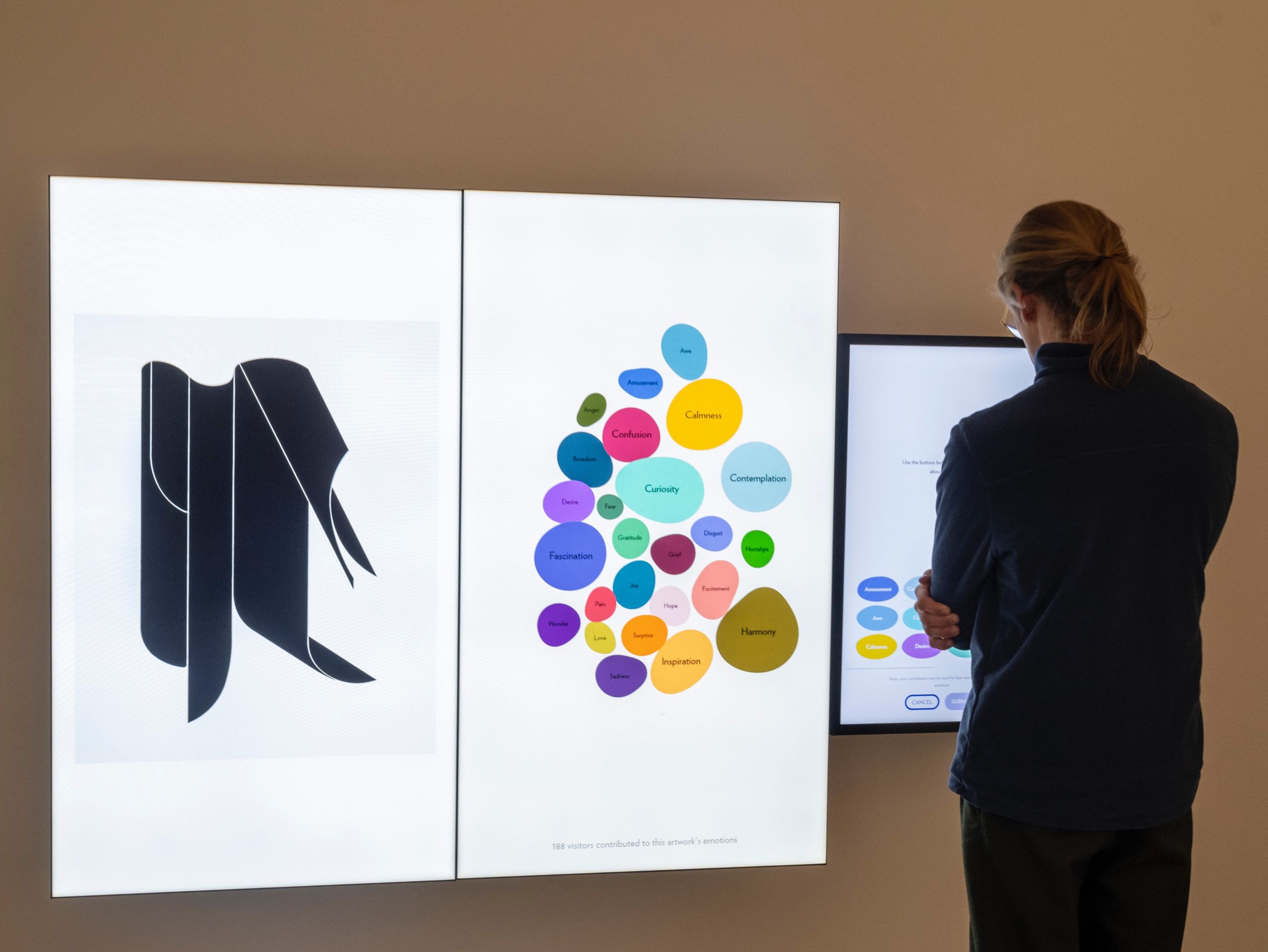
ARTETIK: From the Art
Hallway next to Gallery 303
How do you feel when you look at a work of art? Do you think other people feel the same? ARTETIK: From the Art is a digital experience you cannot afford to miss!
ARTETIK is an installation to explore the emotions triggered by the works in the Guggenheim Museum Bilbao Permanent Collection. It is a digital experience to be completed over the course of time, creating a collective emotion chart from the interactions with individual visitors.
Experience art in the Museum Collection and share your emotions! You can also explore other works arousing fascination and other feelings in the viewer.
ARTETIK: From the Art is a project carried out by the Guggenheim Museum Bilbao and Google Arts & Culture.
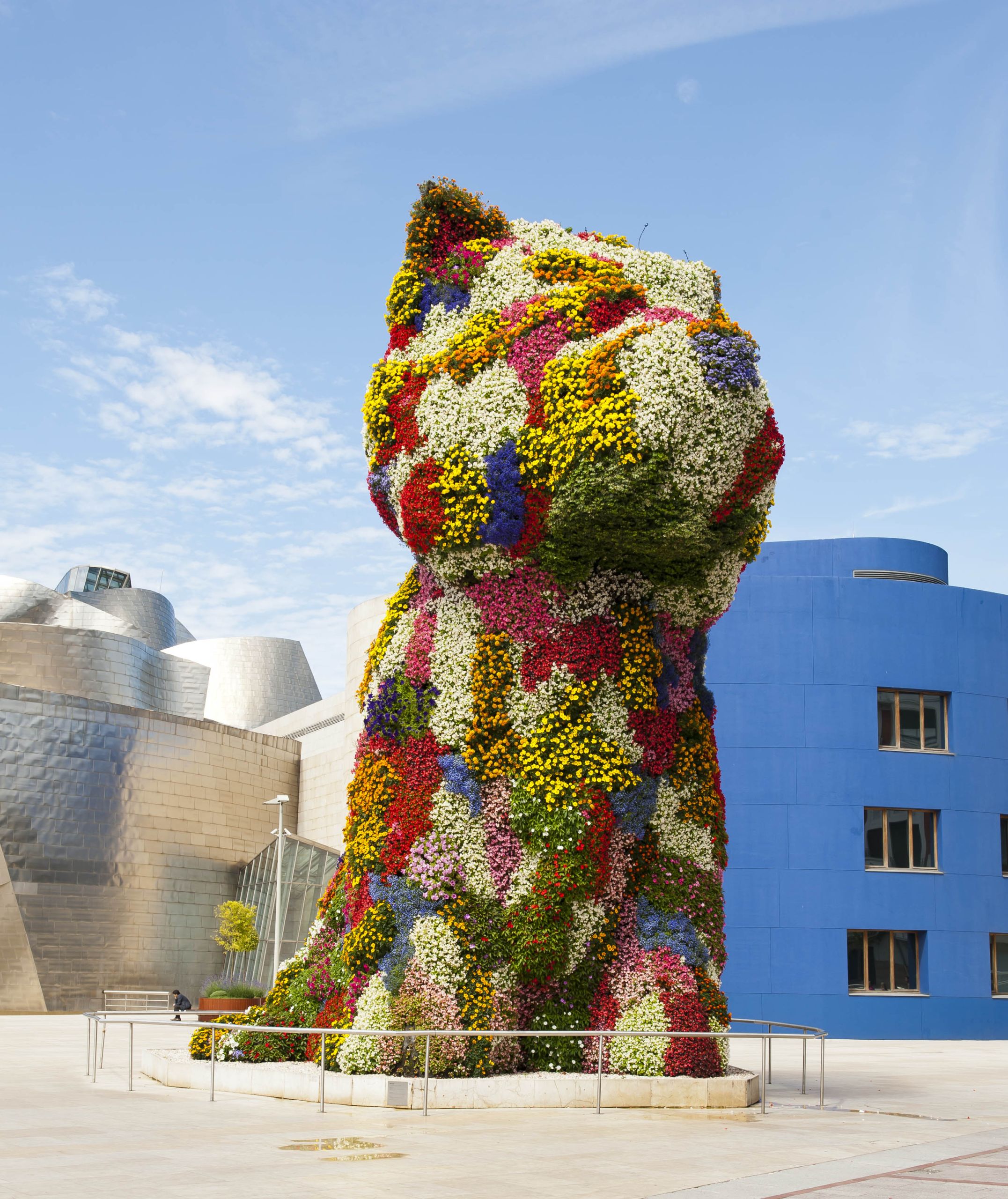
Puppy
Museum Square
Upon leaving the Museum, you will come across Jeff Koons’s Puppy. In Puppy, Koons brings past and present together, evoking eighteenth-century European gardens and their theatrical effects while using sophisticated computer models for the large-scale structure. His giant West Highland white terrier sculpture, covered in plants, is a monument to sentimentalism, conveyed in the form of tender icons: flowers and puppies.
In Puppy, Koons plays with scale and combines references to both highbrow and popular culture, from the art of bush sculpture to dog breeding to decorative ceramics to greeting cards.
Koons designed his Puppy to attract visitors, instill optimism, and make people feel “confident and secure” (in the artist’s own words). Distinguished and robust, Puppy keeps watch of the Museum, as visitors look at him with wonder and joy. With time, Jeff Koons’s dog has become an icon of Bilbao.
Did you know? Puppy is a “living” work of art. It is covered with 35,000 flowering plants: in spring, begonias, impatiens, petunias, lobelias, Indian and Chinese carnations in red, orange, pink, and white; in the fall, pansies.
Jeff Koons
Puppy, 1992
Stainless steel, soil, and flowering plants
1240 x 1240 x 820 cm
Guggenheim Bilbao Museoa
We have come to the end of your tour. The works in this itinerary are but a few examples of art that viewers associate with joy. There are many more, of course. Just follow your own path around to spot others, and feel the joy of art!
We hope you have enjoyed the experience. See you again soon!
